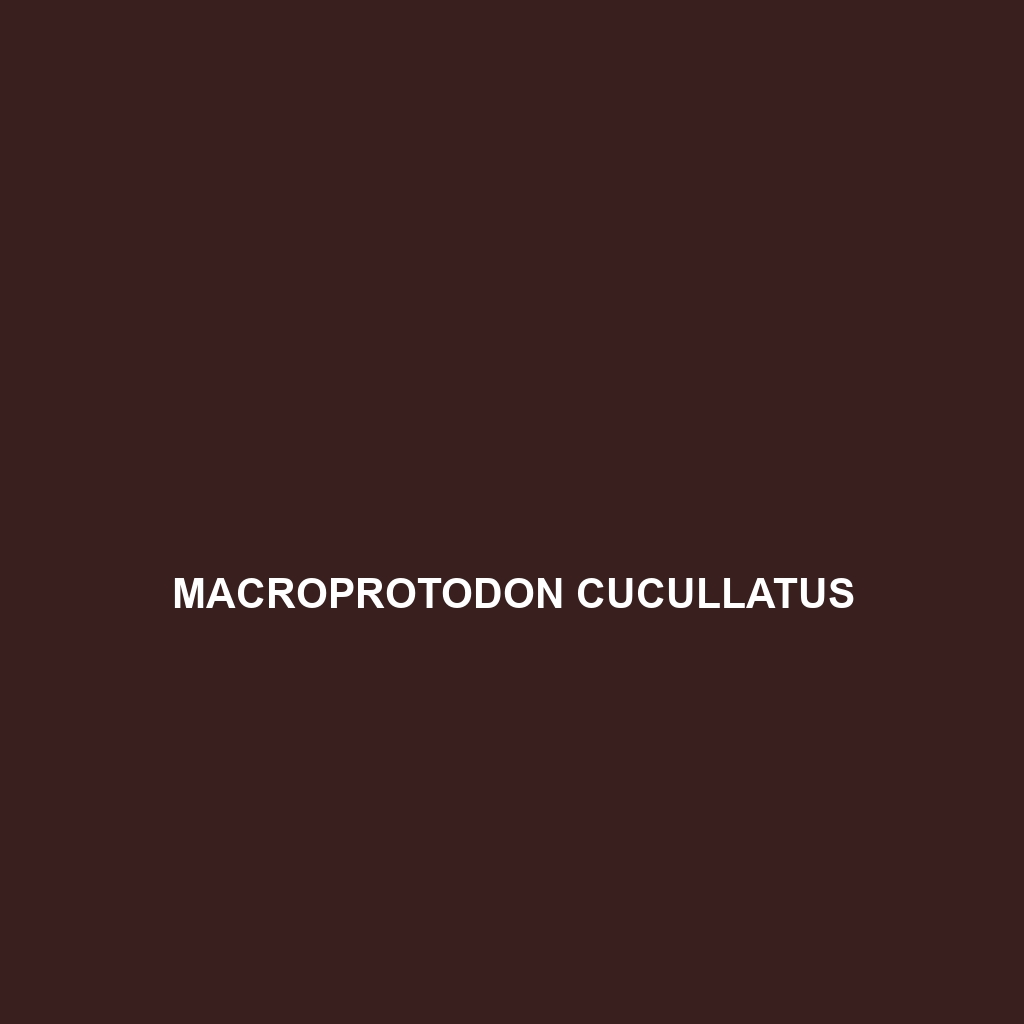Common Name
Macroprotodon cucullatus
Scientific Name
Macroprotodon cucullatus
Habitat
Macroprotodon cucullatus, commonly known as the Hooded Snake, is primarily found in various habitats across North Africa and the Canary Islands. This species thrives in diverse environments ranging from arid regions to lush, subtropical forests. The typical habitats include rocky areas, scrublands, and grasslands characterized by a Mediterranean climate. These snakes are also spotted in temperate forests where they can find shelter among the undergrowth. Their adaptability to different climatic conditions allows them to inhabit dry savannas and regions with moderate rainfall, making them resilient in the face of environmental changes.
Physical Characteristics
The Macroprotodon cucullatus is a relatively small species of snake, typically growing to lengths of 60 to 80 cm (approximately 24 to 31 inches). This snake species is distinguished by its elongated, slender body and a distinctively pointed head which features a prominent, slightly flattened snout. Its coloration is quite variable, generally exhibiting shades of brown, gray, or tan, often adorned with a pattern of darker blotches which serve as camouflage against the rocky and leaf litter backgrounds. One unique feature of this species is its ability to flatten its body, a behavior that helps it navigate through tight spaces in its rugged habitat.
Behavior
Macroprotodon cucullatus displays primarily nocturnal behavior, becoming active during the cooler hours of the night to avoid excessive heat during the day. This snake is known for its secretive nature, often seeking refuge in crevices, under stones, or within dense vegetation. Its social interactions are minimal, with individuals often solitary, coming together only during mating season. During this time, males may engage in elaborate courtship rituals that include displays of body movement and contact, which are vital for attracting females.
Diet
This species is classified as a carnivore, with a diet primarily consisting of small vertebrates such as lizards and rodents. Macroprotodon cucullatus employs a method of ambush predation, where it remains motionless and utilizes its excellent camouflage to surprise unsuspecting prey. Its feeding patterns often highlight its predatory instincts, and it plays an essential role in controlling the populations of small animals within its habitat.
Reproduction
The reproductive cycle of Macroprotodon cucullatus is seasonal, typically occurring in the spring when temperatures rise and food becomes plentiful. After mating, females exhibit ovoviviparity; they retain the eggs within their bodies until they are ready to hatch, giving birth to live young. The gestation period generally lasts around 3 months, resulting in litters consisting of 3 to 10 hatchlings. These young snakes are born fully developed, immediately adapted to their environment, and exhibit skills necessary for survival from birth.
Conservation Status
The current conservation status of Macroprotodon cucullatus has been assessed as Least Concern according to the IUCN Red List. While there are threats to their habitat due to urban development and agricultural expansion, this species maintains stable populations in many regions. Conservation efforts focus on habitat protection and raising awareness to mitigate potential threats posed by human activity.
Interesting Facts
Macroprotodon cucullatus possesses some fascinating characteristics. One notable adaptation is its ability to flatten its body, allowing it to access small crevices and evade predators effectively. Additionally, this species has a relatively long lifespan, often living up to 10 years in the wild. An interesting behavior is its defense mechanism; when threatened, it may mimic the sound of a rattling tail, a tactic not common among its relatives, thus warding off potential threats.
Role in Ecosystem
As a predator, Macroprotodon cucullatus plays a significant role in maintaining the ecological balance within its habitat. It contributes to controlling the populations of prey species, which in turn helps regulate plant life and maintain biodiversity. Being part of the food chain, it also serves as a vital food source for larger predators, which further emphasizes its integral role in the ecosystem’s health. This predator-prey interaction highlights its importance as a component of the local ecological web, ensuring the stability and functionality of its habitat.
